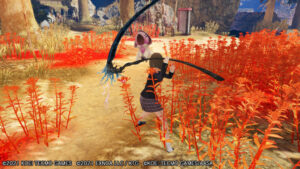Metroid Dread is a fantastic return to the roots of the Metroid franchise. The exploration is as addictive as it is fun, the atmosphere is excellent, and the music is wonderfully eerie. Everyone should give Metroid Dread a shot, even if some of the E.M.M.I. sections can be a bit tedious.
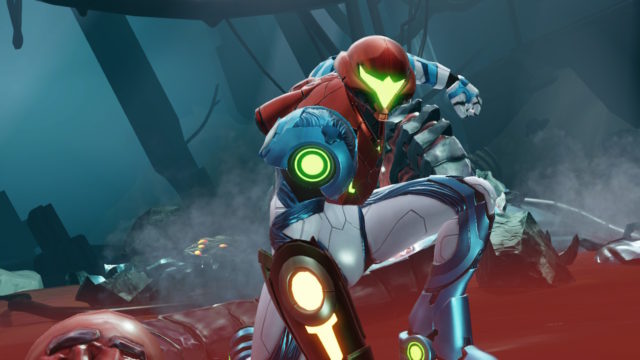
Metroid Dread
Developer: Mercury Stream and Nintendo
Price: $60
Platforms: Nintendo Switch (reviewed)
MonsterVine was provided with a Switch code for review
There’s a lot of contention here at MonsterVine about whether or not the term “MetroidVania” should be used to describe exploratory platformers. Regardless of where you stand on the matter, the point still stands: an entire genre of game arose from Metroid and later Castlevania games. It’s been a long while since Metroid had an all-new foray into the genre it helped to invent, but with Metroid Dread, one thing is clear: the genre got its common name for a reason– that reason being that nobody does it like Metroid. Other than Castlevania. But let’s talk about Metroid.
In Metroid Dread, you play as galactic bounty hunter Samus Aran. Following the events of Metroid Fusion, Samus has been infused with Metroid DNA and is resistant to the vicious X parasite. Thought to be disposed of, a mysterious video of an X parasite is sent to the Galactic Federation. This prompts the Federation to send Samus to the mysterious planet of ZDR to discover who sent the video and what is going on. It’s actually a rather intriguing story that adds a good deal to the overall Metroid lore by the end. I was surprised at how many cutscenes there were, but the cutscenes never overstayed their welcome like in Metroid: Other M, and had excellent action throughout. You can get through the whole story with no previous Metroid experience though, so don’t worry about being lost if you’re new.
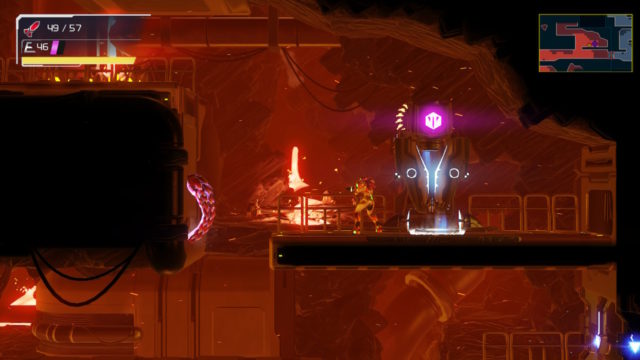
Playing Metroid Dread is one of the most fulfilling experiences of the year. Exploring every nook and cranny of the various areas of ZDR feels incredibly satisfying, especially when you stumble upon a hidden upgrade or secret area. Dread subtly nudges you towards your goal at every turn but does so without discouraging exploration. It’s hard to strike that balance, but Metroid Dread seemingly does it with ease. Reaching a new area always got me excited, as I thought about what kinds of upgrades and new powers would be contained in each map. The gameplay loop of finding a new place, finding a new upgrade, and beating a boss never got old, and made the entire game feel as fresh as the first few rooms.
“Most of the bosses, including the final one, require excellent timing and reflexes to beat, which is the way I like my bosses.“
Throughout the entirety of my 7 and a half-hour playtime, I never once felt bored. I got stuck a few times, but I always figured out how to progress within a reasonable amount of time. Bosses, especially, perfectly struck the balance of tough but fair, making every victory feel like a true triumph. I think the repeated Chozo Soldier bosses near the end is a bit disappointing, as jumping between familiar foes like Kraid and all new terrors worked well for the majority of Dread. Most of the bosses, including the final one, require excellent timing and reflexes to beat, which is the way I like my bosses. As for replayability, beating the game unlocks a Hard Mode that makes enemies hit harder and take longer to kill, which makes you reconsider just how to approach Dread. Seeing how fast you can beat the game, which unlocks new art, is another appealing part of the game, and makes further playthroughs feel rewarding.
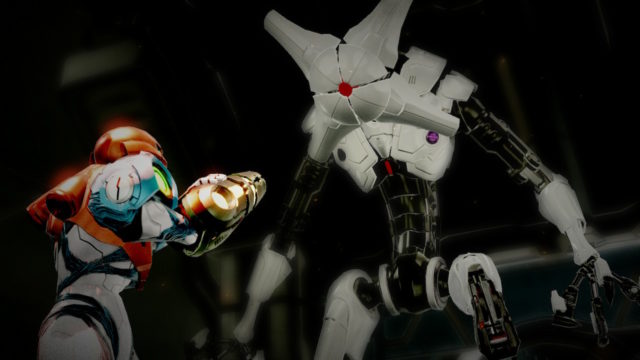
I do wish the E.M.M.I. segments were a bit shorter though, as there were a few times where the way that these robots impeded my progress felt more annoying than frightening. This was especially true in a later part of the game where, prior to getting the Gravity Suit that lets you move normally underwater, you have to run from an E.M.M.I. while submerged. I had to do this section a few times because of how awkward it was to try to avoid the robot while getting to the door I was aiming for, and because of how long the segment was. Similar complaints apply to a couple of the E.M.M.I. zones, which is unfortunate. When they work, you’re filled with anxiety as the nigh-invincible androids pursue you relentlessly, but when it doesn’t work, you’re just left bored or annoyed. That said, finally getting to kill them after a boss fight is ridiculously pleasant, given this complaint.
Metroid Dread’s visuals work perfectly well for the type of game that this is, in that they expertly portray multiple colorful, lonely environments teeming with background stories. It’s not the most stunning game when it comes to overall visual quality, but Mercury Stream does what they can with what they’re given, and that’s enough for me in this case. The animations and cutscenes look quite good given the hardware, so I can’t complain too much.
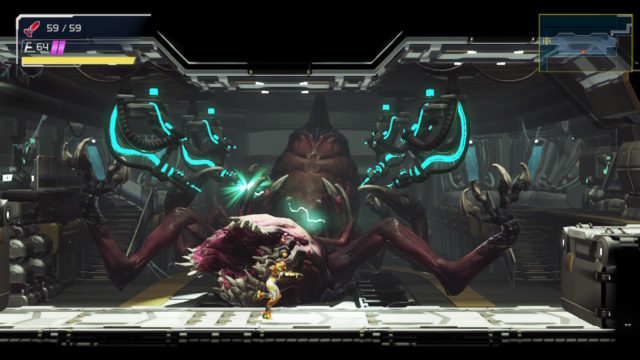
The sound design of Metroid Dread is rather complementary to its tone. The music sounds distant but oddly relaxing at times, or stressful and epic during boss fights. There’s a sense of isolation that ebbs and flows throughout Metroid Dread, making you never feel truly at ease. You do indeed feel all alone in space, as a good Metroid should. The voice acting is also well-done, from the Chozo language scenes that give you a grand sense of lore to the unnerving voice of ADAM as he tells you how hopeless things are. It’s brilliant all-around.
 The Final Word
The Final Word
Metroid Dread lets players see why so many players call the genre “MetroidVania.” The exploration is addictive and remarkably enjoyable, the atmosphere is pitch-perfect, and the boss fights are splendidly difficult. The E.M.M.I. zones could do with some shortening, but overall, Metroid Dread is a can’t-miss Switch experience.
MonsterVine Rating: 4.5 out of 5 – Great
Source: https://monstervine.com/2021/10/metroid-dread-review-why-the-genre-is-named-after-it/





